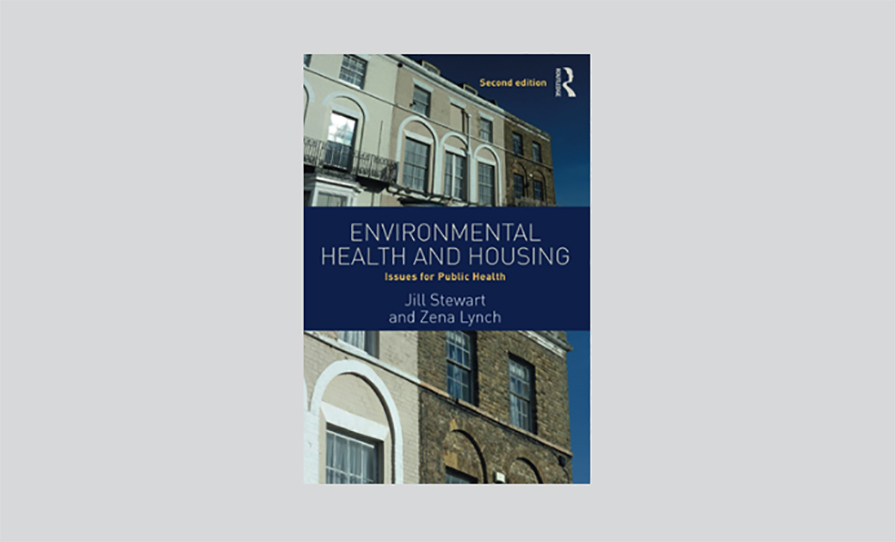The impact of the housing crisis on population wellbeing and the health service is only beginning to be
seriously discussed. David Lynch reports
The housing crisis continues to dominate the news and political agenda in Ireland, particularly since the threat of Covid-19 has receded. However, while people understood the pandemic had obvious and major ramifications for our health system, the same is not always the case with housing.
There is widespread agreement that the statistics are stark. According to figures from the Department of Housing, Local Government, and Heritage, at the end of April, the number of people homeless in the State reached a record 12,259 people. This represented an increase of more than 20 per cent on April 2022. Rising rents and house prices also mean that renters and first-time buyers remain under significant financial pressure.
Often the challenges in housing are seen as independent from other sectors of society. However, concerns have been recently expressed about the impact of the crisis on the economy. Last month the CEO of the Industrial Development Agency, Mr Michael Lohan, noted that accommodation problems risked undermining new investment in Ireland.
The health service is also affected. The challenges facing healthcare workers in finding accommodation is perhaps the most immediate impact. This is an issue that many medical institutions are discussing. To take just one example, the problem was recently raised at the highest level within the Coombe Women and Infants University Hospital in Dublin.
It is acknowledged that
a longer-term strategy around accommodation is required, not just for midwives and nurses but other healthcare workers
Coombe
According to minutes of the Board of Guardians and Directors of the Coombe, seen by the Medical Independent (MI) following a Freedom of Information request, the lack of available accommodation is negatively impacting staff recruitment and retention.
At the December 2022 board meeting, members were updated on the “challenge for staff in obtaining suitable and affordable accommodation”. The minutes noted that a number of “different options will continue to be explored with the matter to be kept on the board’s agenda for now”.
The issue arose again at a board meeting in March during a discussion on staff recruitment. The meeting heard that one of “the biggest challenges continues to be that of accommodation, both in finding it and the cost”.
“It is acknowledged that a longer-term strategy around accommodation is required, not just for midwives and nurses, but other healthcare workers.”
Public health
Beyond the workforce implications, the consequences of housing deficits on health are increasingly recognised by medical bodies and researchers internationally.
In 2018, the World Health Organisation (WHO) published housing and health guidelines. The WHO noted that “improved housing conditions can save lives, prevent disease, increase quality-of-life, reduce poverty, and help mitigate climate change”.
“Housing is becoming increasingly important to health in light of urban growth, ageing populations and climate change,” according to the Organisation.
In Ireland, in July 2021, the HSE’s public health medicine environment and health group (PHMEHG) published a position paper on housing and health (see panel). The group, which comprises both public health consultants and specialists in public health medicine, described adequate housing as a “basic human right”.
The paper added that housing is a “key socio-economic determinant of health”.
“Improved housing conditions can save lives, prevent disease, increase quality-of-life, reduce poverty, and help mitigate climate change,” according to the PHMEHG, which is chaired by former IMO President Dr Ina Kelly.
The group noted that homelessness and poor quality housing have been linked to asthma and other respiratory illnesses. They also contribute to the spread of infectious diseases including hepatitis A and C; increased healthcare utilisation; accidents; falls; poor nutrition; premature labour; and delivery of low birth weight infants and poor mental health.
The position paper called for the “end” of homelessness and for “housing affordability and stability”.
Renters
The evidence-base on the link between housing and health continues to grow.
Last month, new research from the Economic and Social Research Institute (ESRI) found a large proportion of renters are “vulnerable in the case of a healthcare shock”, if they do not hold a medical card. The research reported that “a significant proportion” of people who rent “especially those who are young and employed” do not have a medical card. These individuals are at “high risk of poverty and have low enough incomes to qualify for public housing assistance, yet may be left with a large financial burden in the event of a health emergency due to a lack of public healthcare coverage”.
The research highlighted how housing policy cannot be regarded as existing in a separate silo from health.
“There has been surprisingly little research examining the interrelationships between these areas,” according to Dr Brendan Walsh (PhD), an author of the paper and Senior Research Officer at the ESRI.
“This paper aimed to shed some light on how health outcomes, but also public healthcare coverage, differed across tenure types,” he told MI. The ESRI study was part of a wider programme of research funded by the Department of Housing, Local Government, and Heritage examining health and housing.
Dr Walsh noted that while the WHO outlines housing and the built environment as a key social determinant of health, “there has been little focus on how housing factors, and tenure precarity, which is always highest in the private rental tenure group, can impact health.”
He said that previous ESRI research had shown that housing quality, overcrowding, and precarious rental agreements all impact health and wellbeing.
“We know that poorer health subsequently can interfere with an array of social and economic factors such as ability to work, productivity, and social capital more generally,” he told MI. “This does point to housing policy putting more emphasis on health. One of the wider goals of our research is to develop a macro-simulation model that will project the healthcare demand and supply implications of new housing developments.”
He predicted this tool would make it easier for local supply to be planned to meet the demands of new populations. “It is a good example of how health and housing policymakers can work closely together.”
On the specific health challenges facing renters highlighted in the research, Dr Walsh offered a potential policy change that could help.
Rather than explicitly using housing-level factors, such as being a renter, to inform medical card eligibility, he said it would be better to incorporate healthcare needs into medical card eligibility criteria.
This “may better target those most vulnerable to high healthcare costs”, according to Dr Walsh.
He noted that the expansion of free GP care, in addition to the removal of inpatient fees from public hospitals, and the reduction in the Drugs Payment Scheme threshold, also relieved some of the burden of healthcare costs.
“These policies are welcomed. But for individuals without a medical card who may require a range of healthcare services, out-of-pocket payments, and the need to source care privately are still large burdens.”
Mental illness
Doctors across many specialties have seen some of their patients’ lives affected by the housing crisis. This has been the case in the mental health and psychiatric services, for example.
People with mental illnesses such as schizophrenia were at increased risk of homelessness and instability of accommodation, even before the current housing crisis, according to Prof Brendan Kelly, Professor of Psychiatry at Trinity College Dublin and Consultant Psychiatrist at Tallaght University Hospital, Dublin.
“As a result, the negative effects of present problems are amplified in this population,” Prof Kelly told MI. “This results in more homelessness, more uncertainty about accommodation, and greater difficulty finding placements for people who are mentally ill and homeless.”
Prof Kelly added this had a substantial impact on mental health and the ability to deliver services, especially when patients are continually moving between hostels or sleeping rough.
“These factors both increase the need for services and make them harder to deliver in a sustained, reliable way, although specialist services work hard to do their best. These factors also increase stress in the families of people with mental illness.”
Regarding the impact of the crisis on the general population’s mental health, Prof Kelly said it had “increased anxiety” among many people who find it “impossible to obtain reasonable, sustainable accommodation”.
“It is especially concerning that a generation of young adults is much delayed in establishing an independent base,” he said.
For many young people, the current situation results in limitations on the development of various life skills at an appropriate age, such as living independently, “with all of the opportunities for growth and responsibility that this brings.”

Doctors
Some experts argue the interconnectedness between housing and health should lead to a broader and deeper definition of what constitutes ‘health’ in the first place.
Dr Jill Stewart (PhD), Associate Professor in Public Health at University of Greenwich, UK, said: “The starting point for this perhaps should be – what do we mean by health?”
“We should use a wide definition that includes the ability to grow and live a full and rewarding life, not merely thinking about the absence of disease or accident,” Dr Stewart, who is also the co-author of the book Environmental Health and Housing: Issues for Public Health (Routledge; 2018), told MI.
“This means designing good living environments in the first place as well as interventions seeking to rectify poor conditions after. Housing is frequently a result of a person or community’s experience of poverty or disadvantage and there are no simple solutions.”
She noted that “unfortunately” housing and health are separate policy areas, “but there have been moves to bring public health and housing closer together.”
Dr Stewart said that this combination can be “very successful”. However, she explained the picture can be “very fragmented”, adding there may also be tensions between regulation and health and how they can work more effectively together.
“Primarily there needs to be a focus on the social determinants of health, including housing, but also its wider environment [which] takes wider issues of poverty and health inequalities into account with appropriate environmental health and public health interventions,” said Dr Stewart.
“Only by focusing on what determines health and intervening appropriately in housing can we hope to effect real change.”
Dr Stewart said that, while there are many individual doctors who are interested in the health effects of poor or otherwise unsuitable housing, the “ideal” would be that people working in the housing sector collaborate “more effectively and proactively” with healthcare institutions.
Dr Stewart added that the social and economic costs of poor housing to healthcare are enormous “and much evidence for this is included in our book”.
“But there are also other costs to society, such as in education and crime. There are also the more fundamental issues of people simply having somewhere to call home.”
She noted that housing and health issues change across a person’s life. “There needs to be enough decent, secure and affordable housing for all or the costs will be felt elsewhere, such as in healthcare.” Dr Stewart said many interventions “are highly cost-effective” and make a “substantial difference to quality-of-life”.
“I think all health professions should focus more on housing, what can be done and by whom, to help ensure decent housing for all,” she said. “There are multiple issues to explore and understand and practitioners need to work more closely together to understand each others’ roles and what they can contribute.”
The health consequences of record homelessness
Every month this year has seen records broken for the number of people homeless in the State.
The Dublin Simon Community noted there were 9,160 people in emergency accommodation in Dublin in May. This represented a 23 per cent increase over the past 12 months.
Ms Catherine Kenny, CEO of Dublin Simon Community, said that a significant percentage of these people were employed.
“On one night in June, 25 per cent of Dublin Simon’s emergency beds were occupied by workers,” said Ms Kenny. “They were cleaners, event and retail security staff, taxi drivers, van drivers and lorry drivers, scaffolders, electricians and construction workers, healthcare assistants and carers, shop workers and retail staff, barbers, and bar workers.”
Ms Kenny said that with the “scarcity of suitable accommodation, soaring rents, the cost-of-living crisis, and notices to quit coming to the end of their term, housing insecurity is affecting workers like never before”.
The evidence-base for the health consequences of these bleak statistics is growing. A recent paper on the issue is contained in the current edition of the Journal of Public Health (June 2023).
The paper, ‘Homelessness and health-related outcomes in the Republic of Ireland: A systematic review, meta-analysis and evidence map’, concluded that homelessness in Ireland is associated with reduced access to primary care and overreliance on acute care. Chronic conditions among homeless individuals are also understudied.
Ms Carolyn Ingram, PhD student supervised by Dr Conor Buggy (PhD) and Dr Carla Perrotta at University College Dublin School of Public Health and an author on the paper, told the Medical Independent (MI) that the impact of housing on health is “complex”.
“Our review compiles a long list of associations between homelessness and adverse health outcomes,” Ms Ingram said. “We know with certainty that homelessness negatively impacts both physical and mental health.” The research findings emphasise that housing and health “are inextricably linked and require an interagency response”. It states people experiencing homelessness have systematically worse health outcomes that demand a proportional allocation of resources.
Ms Ingram noted that it was “important to remember” that most of the information on homelessness and health in Ireland comes from healthcare settings.
“There’s a gap in what we know about people who aren’t accessing services,” Ms Ingram added. “Asylum seekers, for example, are currently [experiencing] homelessness directly upon entering the country at which point we understand little about how they’re interacting with the health system.”
She also said that the term ‘homelessness’ encompasses “a whole array of living circumstances which impact health differently. Homelessness also intersects with poverty, adverse childhood events, substance use, domestic violence, social isolation… factors which contribute to poor health in their own right.”
Taking steps to link national housing and health datasets “would allow us to disaggregate how specific types and lengths of homelessness relate to health”.
Ms Ingram said, in her opinion, it is “fair to say that housing and health are often seen as separate policy entities”. However, she cited the Housing First Programme as an exception.
She said this “provides a stable home first and wraparound supports with the understanding that someone can’t look after their health if they don’t have a safe place to live”.
“Our review identified a body of evidence showing the effectiveness of this approach in Ireland and it’s encouraging to see the Departments
of Housing and Health working together to expand the programme [Housing
First National Implementation Plan 2022-2026].”
As reported previously in MI, the work undertaken by the HSE and frontline medical services within the homeless community during the pandemic received much praise.
“There’s some exceptional access-to-care work being done at the community level in Dublin,” said Ms Ingram. “People experiencing homelessness have access to a GP via a number of community health clinics. It would be great to see these services more integrated with mainstream health services in time.”
She added that there had been a push in Ireland to “improve ethnicity recording” in health and social care data collections.
“Recording housing status would be an additional way to identify and target avoidable health disparities” and implementing a system of electronic patient identifiers “would allow us to track how an individual interacts with health services over time”.
“This is particularly important for monitoring chronic conditions. Homeless individuals typically seek care for emergency purposes and it’s currently very difficult in Ireland to track how long-term conditions develop and are managed.”
On a “more encouraging note”, Ms Ingram said the review “shows a large body of qualitative evidence published in Ireland in the last 10 years, which helps to unpack how social determinants and traumatic experiences intersect and contribute to both homelessness and health”.
Separately, the HSE’s public health medicine environment and health group published a position paper on housing and health two years ago. It made a number of findings including:
- People who are chronically homeless face substantially higher morbidity, in terms of both physical and mental health, and increased mortality. Housing that is insecure, sometimes due to affordability issues or weak security of tenure, is stressful and also has a negative impact on physical and mental health.
- Poor housing conditions are one of the mechanisms through which social and environmental inequality translates into health inequality.
- The positive effects of housing warmth on respiratory health and wellbeing of children and adults are a consistent research finding. Improving thermal comfort through installing insulation and heating reduces GP visits and days off school and work. For countries with temperate or colder climates, 18°C has been proposed as a safe and well-balanced indoor temperature, with an upper limit of 23°C.
- Ventilation is also key to reducing health risks from radon exposure, aeroallergens, infectious diseases, and heat waves.













Leave a Reply
You must be logged in to post a comment.